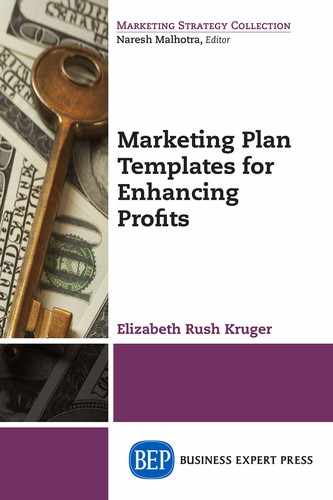Products and Services: Offer Treasures
Overview
In 1983, Kimberly-Clark Corporation invented an inexpensive felt that was waterproof, air permeable, and seamless. I believed that athletes would prefer this felt to Gore-Tex because water leaked through its seams. However, Kimberly-Clark never commercialized their invention. When its patent expired, Weifang Chenhua Waterproof Co., Ltd. in Shandong, China, began selling the felt for pennies per square meter.
Aesop encourages us to offer different strokes for different folks. We learn that trying to please all customers will please no one. Offer products and services that key customers will treasure and discontinue other items.
Key customers produce 80 percent of the profits and are willing to pay high prices to get exactly what they want. In contrast, other customers produce only 20 percent of the profits and are likely to switch to lower-priced competitors. Let us learn how to offer different strokes for different folks.

Kimberly-Clark closed this mill1
Vignettes
The Product That Wasn’t
In 1983, Dr. Kenneth Bernhardt taught a class about product development at the Georgia State University in Atlanta, Georgia. My term project was to propose a new product for Kimberly-Clark Corporation.
The Vice President of Marketing told me that the company could inexpensively produce a polyethylene polypropylene felt that was waterproof, air permeable, and seamless. However, Kimberly-Clark did not know what to produce with their invention because the felt was coarse and difficult to dye.
I believed that athletes would prefer this felt to Gore-Tex because water leaked through its seams. Moreover, Kimberly-Clark could produce the fabric at a fraction of the cost of producing Gore-Tex. I proposed producing sleeping bags with the felt, but Kimberly-Clark never commercialized their valuable invention.
Several years later, I overheard people talking about Gore-Tex at a ski lodge. Someone asked a Gore-Tex executive if the company had any competitors and he replied, “Not really. Kimberly-Clark had the capability, but they never realized they could have blown us out of the water.”
Kimberly-Clark missed the boat. When its patent expired, Weifang Chenhua Waterproof Co., Ltd. in Shandong, China, began selling the felt with the brand name Chenhua. They sold the felt to waterproof the outer wall of thermal insulation for pennies per square meter. Tons of Chenhua ship out each week from the port of Qingdao, China.2
When Is a Fox Hungry?
An Aesop Fable
A fox invites his friend to dinner and serves her a delicious soup in a flat dish. The fox slurps up the soup and licks his lips with delight. He snickers at the stork’s efforts to suck up the soup with her bill. The hungry stork slams the door and flies away.
Later, the stork plays a similar prank on the fox. She invites the fox to dinner and serves him a delicious soup in a tall pitcher. The stork eagerly sucks up the soup with her bill and giggles at his efforts to reach the broth with his tongue. Still hungry, the fox slinks away with his tail between his legs.
Aesop’s fable encourages us to offer different strokes for different folks.
Why Offer Treasures to Key Customers?
Do Different Folks Want Different Strokes?
Aesop’s fable teaches us to serve soup to a fox in a flat dish and to serve soup to a stork in a pitcher. If we compromise with a cup, both go home hungry. We learn that trying to please all customers will please no one. Instead, we must be empathetic and offer different strokes for different folks.
Design products and services that key customers will treasure and discontinue your other items. Key customers produce 80 percent of the profits and are willing to pay high prices to get exactly what they want. In contrast, other customers produce only 20 percent of the profits and are likely to switch to lower-priced competitors.

Henry Ford and his Model T Ford3
If I had asked people what they wanted, they would have said faster horses.
Henry Ford, industrialist, founder of the Ford Motor Company, 1863–1947.
Is Pruning Good for a Business?
When I owned a house, I would prune my lilacs. One year I pruned the lilacs back so much my neighbors believed I had killed them. However, soon their branches sprouted and bloomed more than ever before.
Pruning strengthens lilacs—and a business. Like lilacs, any business must prune its less profitable items. The business saves the cost of manufacturing, distributing, and promoting them, and can use the savings to improve its more profitable items.
Brand managers often fight to protect their brands as if their careers depend on it. They reinvent brands, launching new improved versions, even though the brands deserve a respectful funeral.
Businesses often confuse their customers by offering too many choices. Research indicates that customers buy more when there are fewer options.4 For example, Henry Ford said he offered the Model T Ford in “any color so long as it is black.”5
Which Items Are Not Very Profitable?
As predicted by layers of the Pareto distribution, most products and services are not very profitable. In fact, the bottom 99 percent of the items produce less than half of the profits (Figures 5.1 and 5.2 and Table 5.1).

Figure 5.1 Prune products and services

Figure 5.2 Bottom layers
Table 5.1 Products and services
|
Layer |
Top items |
Profits |
Return |
Bottom items |
Profits |
Return |
|
1 |
20% |
80% |
4-fold |
80% |
20% |
1/4 |
|
2 |
4% |
64% |
16-fold |
96% |
36% |
1/3 |
|
3 |
0.8% |
51% |
64-fold |
99% |
49% |
1/2 |
How Can a Business Offer Treasures?
A wise business offers treasures to its key customers, discontinues other products and services, and launches new ones that its key customers will treasure. A business can innovate with new items or prune features, options, and product or service lines.
Prune Features
In the 1950s, IBM began using the 80/20 rule to simplify the menus of its software. Research showed that its customers used 20 percent of the functions 80 percent of the time. In response, IBM put popular functions on drop down menus and relegated unpopular functions to less conspicuous locations.6 Like IBM, many software developers and manufacturers also simplify their menus.
Prune Options

Herman Cain7
Pillsbury appointed Herman Cain as president and CEO of Godfather’s Pizza. Soon afterward Cain visited a restaurant and looked at the confusing array of pizza toppings. He asked which toppings were rarely requested. Cain eliminated these topping from all franchisees of Godfather’s Pizza. Cain credits a single overriding principle for his success—that is, to “focus, focus, focus.”8

Performance customer9
Prune Product or Service Lines
Sea-Doo, the personal watercraft (PWC) brand of Bombardier Recreational Products, has product lines that appeal to different types of customers. I identified four market segments when I conducted in-depth marketing research with Sea-Doo customers over 20 years ago. Which type of Sea-Doo customer are you?
- The Tow Sport line appeals to families who cannot afford a standard boat. Members of this market segment love to tow one another. These customers seek a powerful engine, rear-view mirror, and reboarding step.
- The Recreation line appeals to couples who explore waterways on one PWC. These couples seek a stable boat, comfortable seat, reliable engine, and large gas tank.
- The Performance line appeals to young men who enjoy thrills. They seek a maneuverable boat, high-performance engine, and big plume.
- The Luxury line appeals to wealthy couples who host parties at their lake home. These couples provide a fleet of upscale Sea-Doos for their guests.

Luxury customers10
The most profitable customers buy Luxury Sea-Doos, whereas less profitable customers buy less-expensive Sea-Doos. I believe that Sea-Doo could increase its profits by discontinuing its less profitable product lines, thereby upgrading the reputation and perceived value of its Luxury line.
Innovate for Key Customers
Bluebeam Software, Inc. (Bluebeam) is quickly improving its products. The software leverages the PDF file format into smart, simple solutions for a paperless workflow. Its customers are architecture, engineering, and construction firms, as well as government agencies, manufacturers, detailers, and drafters. According to Richard Lee, Bluebeam’s President and CEO,
We’re relentlessly working to mimic the way you normally work with pen and paper …. Our customers need to keep projects moving whether they are in an office, at the job site or on a camping trip, and the technology … makes it easier to finish projects faster and work better.11
The software simplifies PDF creation, markup, editing, and collaboration. Joe Giaudrone, Assistant Project Manager at Schuchart Corporation, testifies about Bluebeam:
It does about 300% more than the Adobe product. Not to sound like a huge nerd or anything, but every time one of us finds a new helpful feature we get excited and giddy to show it off to one another and to rub it in our colleagues’ faces who are still using the Adobe product.12
Key #5: Offer Treasures

Will Rogers13
If advertisers spent the same amount of money on improving products as they do on advertising them, they wouldn’t have to advertise them.
Will [Penn Adair] Rogers, cowboy, vaudeville performer, actor, humorist, author, and columnist, 1879–1935.
What Is a Secret to a Successful Startup?
For many years, I taught marketing and research courses at the Bethune-Cookman University, a Historically Black College or University (HBCU) in Daytona Beach, Florida. Mary McLeod Bethune founded the university.

Mary McLeod Bethune14
I ran my Principle of Marketing classes like a business incubator. The marketing students wrote strategic marketing plans, implemented their plans, and kept their profits. Most students earned at least $700 within three months and only four out of over 2,000 students did not earn profits.
I taught them how to focus on quality, compete on strength, delegate weaknesses, describe key customers, and offer treasures. They knew what their fellow students wanted, delighted them with their products and services, and took pride in running a successful startup.
For example, one student found a cheap supplier of laptops in China and sold them to her fellow students. She took orders before purchasing them through PayPal and easily earned thousands of dollars.
Another student manufactured and sold teeth grills to black men. His mother worried that he would never be successful, but I told her, “He’s already making lots of money selling grills. He can use these skills in a corporate career.”
Although skilled at marketing to their friends, they were not willing to cross the bridge to the peninsula and market to others. Are you willing to market to people who are different from you?
Who Are the Key Customers?
Exactly what products and services do your key customers want and why do they value them? Do they seek a lifestyle like Harley bikers? Do they want to maintain a pleasant situation like tourists in Costa Rica? Do they want to escape from drudgery like engineers using Bluebeam software? You must discover how to add value to items that key customers’ treasure and discontinue features, options, and product or service lines they do not treasure.
Focus on the very best customers because they are willing to buy a ridiculous amount from the business. Once the business identifies them, develop a premium package just for them and keep their hearts loyal to your business. Treat these customers as if they are laying golden ostrich eggs.
Summary
Kimberly-Clark Corporation could have inexpensively produced a waterproof, air permeable, and seamless felt, but never commercialized their invention. When its patent expired, a Chinese manufacturer began selling shiploads of the felt for pennies per square meter.
One of the Aesop’s fables encourages us to offer different strokes for different folks. Offer products and services that key customers will treasure and discontinue other features, option, and lines.
Key customers are willing to pay high prices to get exactly what they want, whereas other customers are likely to switch to lower-priced competitors.
Research indicates that customers buy more when there are fewer options. The Pareto distribution predicts that the bottom 99 percent of the items will produce less than half of the profits. The fifth key to enhancing profits is to offer treasures.
 Offer Treasures to Key Customers
Offer Treasures to Key Customers
Describe what key customers consider an ideal product or service.
□ Accessories |
□ Packaging |
□ Size |
□ Endorsements |
□ Quality |
□ Styling |
□ Features |
□ Reputation |
□ Support |
□ Options |
□ Risk reduction |
□ Training |
Decide how the business will offer treasures:
- What do key customers consider the three most important traits of an ideal products or services?
- How will the business improve the value of its products or services for its key customers?
- Which product or service lines will the business discontinue?
- Which products or services will the business discontinue?
- Which options will the business discontinue?
- Which features will the business discontinue?
